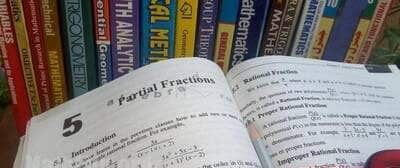
Chapter 05: Partial Fraction
Partial fraction decomposition is a mathematical technique used to break down a rational function (a ratio of polynomials) into simpler fractions. It is often employed in calculus and algebra to simplify integrals, solve equations, and analyze complex functions.
The process involves expressing the rational function as a sum of simpler fractions, called partial fractions. Each partial fraction typically has a numerator of lower degree than the original function. By decomposing the rational function, it becomes easier to manipulate, integrate, or solve for unknown variables.
To perform partial fraction decomposition, one typically follows these steps:
- Factorize the denominator of the rational function into irreducible factors.
- Write the rational function as the sum of partial fractions, with each partial fraction having a distinct denominator corresponding to one of the irreducible factors.
- Determine the unknown coefficients of the partial fractions by equating the numerators on both sides of the equation.
- Solve the resulting system of equations to find the values of the unknown coefficients.
- Combine the partial fractions back together to obtain the original rational function in its decomposed form.
Partial fraction decomposition provides a powerful tool for simplifying and solving various mathematical problems involving rational functions, and it is widely used in calculus, engineering, physics, and other fields of mathematics.
Contents & summary
- Introduction
- Rational Fraction
- Proper Rational Fraction
- Improper Rational Fraction
- Resolution of a Rational Fraction P(x)Q(x)�(�)�(�) into Partial Fractions
- Exercise 5.1
- Exercise 5.2
- Exercise 5.3
- Exercise 5.4

